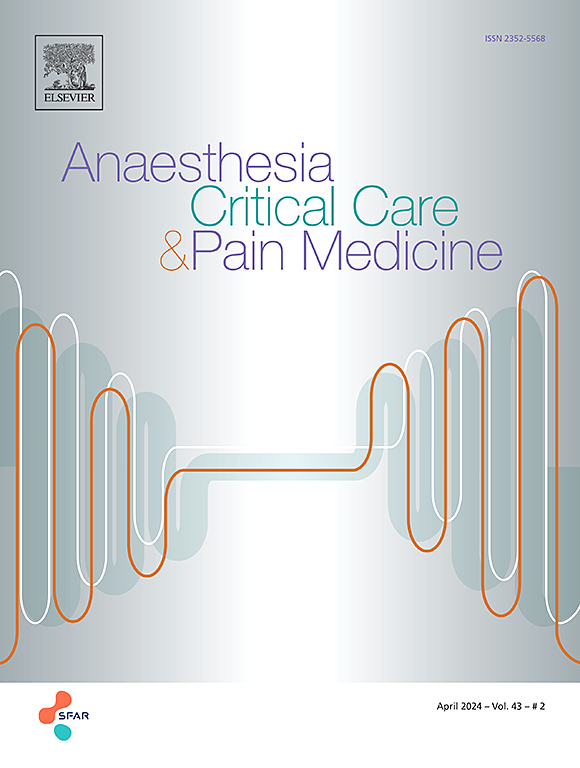Optimal brain perfusion pressure derived from the continuous monitoring of cerebral autoregulation status during neonatal heart surgery under cardiopulmonary bypass in relation to brain injury: An observational study
IF 3.7
3区 医学
Q1 ANESTHESIOLOGY
引用次数: 0
Abstract
Background
Understanding cerebral blood flow regulation and later optimizing brain perfusion is part of neuroprotection during cardiopulmonary bypass (CPB) in neonates.
Methods
A total of 38 neonates undergoing CPB were monitored using near-infrared spectrometry and mean arterial pressure (MAP). Cerebral autoregulation (CAR) was assessed through the continuous measurement of the Cerebral Oxygenation Index (COx), and CAR-derived metrics were determined by plotting averaged COx values by MAP: Optimal MAP (MAPopt), lower limit of CAR (LLA), upper limit of CAR (ULA).
Results
Out of 38, 17 (45%) neonates exhibited moderate to severe brain lesions post-operatively. The onset of CPB was associated with CAR disruption (mean COx pre-CPB = 0.16 ± 0.11; during CPB: 0.39 ± 0.37, p < 0.001). A LLA was identified in 31 out of 38 (82%), 23 out of 38 (61%), and 14 out of 38 (37%) patients before, during, and after CPB, respectively. An ULA was identified in 29 out of 38 (76%), 22 out of 38 (58%), and 14 out of 38 (37%) patients in the same time frames. Patients with abnormal post-operative brain MRI spent more time below the LLA during CPB: 28.3% [17.1–32.9] versus 9.9% [6.9–18.5] in patients without detected brain injury, p = 0.039. No differences were observed regarding the time spent above the upper limit of autoregulation.
Conclusion
The study provides valuable insights into the intricate relationship between intraoperative cerebral hemodynamics and post-operative brain injury. Further research is warranted to explore potential interventions based on CAR-derived metrics during CPB in neonates.
Clinical trial registration number
Not applicable.
Prior presentation
Not applicable.
在心肺旁路下进行新生儿心脏手术期间,通过持续监测脑自动调节状态得出的最佳脑灌注压与脑损伤的关系:一项观察性研究。
背景:了解脑血流调节和后期优化脑灌注是新生儿体外循环(CPB)过程中神经保护的一部分。方法:采用近红外光谱法和平均动脉压(MAP)对38例接受CPB的新生儿进行监测。通过连续测量脑氧合指数(COx)来评估大脑自动调节(CAR),并通过MAP绘制平均COx值来确定CAR衍生指标:最优MAP (MAPopt), CAR下限(LLA), CAR上限(ULA)。结果:38例新生儿中,17例(45%)术后出现中度至重度脑损伤。CPB的发生与CAR破坏相关(CPB前的平均COx = 0.16±0.11;结论:本研究为了解术中脑血流动力学与术后脑损伤的复杂关系提供了有价值的见解。在新生儿CPB期间,需要进一步研究基于car衍生指标的潜在干预措施。临床试验注册号:不适用。事先陈述:不适用。
本文章由计算机程序翻译,如有差异,请以英文原文为准。
求助全文
约1分钟内获得全文
求助全文
来源期刊

Anaesthesia Critical Care & Pain Medicine
ANESTHESIOLOGY-
CiteScore
6.70
自引率
5.50%
发文量
150
审稿时长
18 days
期刊介绍:
Anaesthesia, Critical Care & Pain Medicine (formerly Annales Françaises d''Anesthésie et de Réanimation) publishes in English the highest quality original material, both scientific and clinical, on all aspects of anaesthesia, critical care & pain medicine.
 求助内容:
求助内容: 应助结果提醒方式:
应助结果提醒方式:


